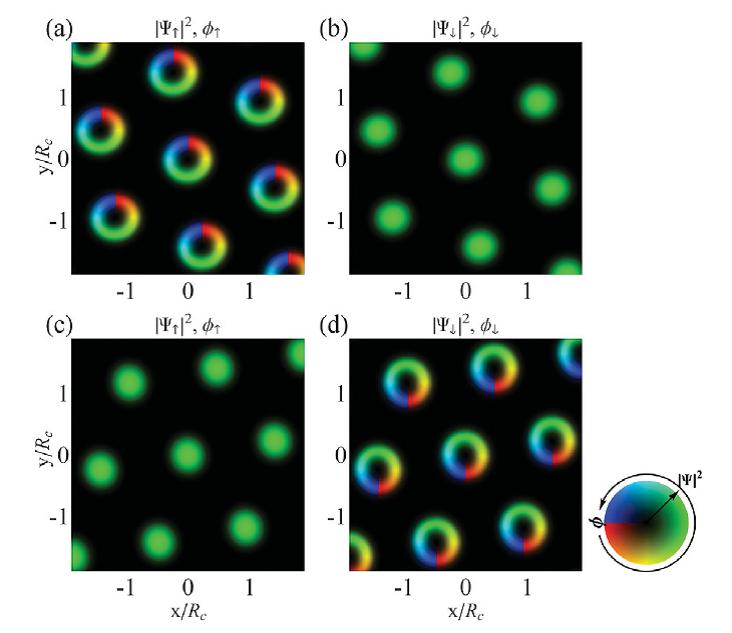
A research group led by researcher ZHANG Shougang from the National Time Service Center (NTSC) of the Chinese Academy of Sciences investigated the ground-state quantum phases of Bose gases with spin-orbit (SO) coupling and soft-core long-range interactions.
They found that the combined effects of SO coupling and soft-core long-range interaction could lead to a chiral supersolid in which spontaneous circulation of particles emerges in each unit cell.
Their study entitled "Chiral Supersolid in Spin-Orbit-Coupled Bose Gases with Soft-Core Long-Range Interactions" was published in Physical Review Letters.
The supersolid phase is an exotic state of matter predicted by scientists in the 1960s and 1970s. In 2004, the experimental team of the Pennsylvania State University has published papers in Nature and Science respectively, claiming the discovery of supersolid phase in helium-4, which caused widespread controversy among scientists.
In 2017, Wolfgang Ketterle, a famous physicist and Nobel Prize winner in physics, made the first experimental observation of supersolid fringes in spin-orbit coupled Bose-Einstein condensation by using Bragg diffraction technique, which marked a major breakthrough in the study of the supersolid phenomena.
At present, the supersolid phase in a two-dimensional spin-orbit coupled Bose condensate has attracted extensive interest of physicists. A new ultracold atomic system has been designed by the research team of NTSC, which enables supersolids to exhibit nonmediocre quantum hydrodynamic and magnetic properties in the presence of spin-orbit coupling.
It is found that the chiral symmetry is broken with spontaneous emergence of circulating particle current. This implies that a finite angular momentum can be generated with neither rotation nor effective magnetic field. The direction of the angular momentum can be altered by adjusting the strength of spin-orbit coupling or interatomic interaction.
Their discovery provides a new understanding of spin-orbit coupling and the supersolid phenomena, and opens up a new direction for the exploration and discovery of novel quantum states.
This work was supported by the National Natural Science Foundation of China, CAS "Light of West" Program and the Youth Innovation Promotion Association of CAS.

The chiral supersolid induced by Rashba spin-orbit coupling and soft-core long-range interactions. The density and phase distributions represented, respectively, by brightness and color, and the directions of the arrows in the color wheel indicate the elevation of the respective quantities. (Image by NTSC)

86-10-68597521 (day)
86-10-68597289 (night)

86-10-68511095 (day)
86-10-68512458 (night)

cas_en@cas.cn

52 Sanlihe Rd., Xicheng District,
Beijing, China (100864)

